
09-01-2026 10:08
 Blasco Rafael
Blasco Rafael
Hola, en el mismo habitat que la anteriorRetamaDia

08-01-2026 21:22
 Blasco Rafael
Blasco Rafael
Hola, He recogido esta muestra de Orbilia sobre Re

07-01-2026 10:24
 Danny Newman
Danny Newman
Pezicula sp. on indet. hardwood Appalachian Highl

07-01-2026 22:22
 Danny Newman
Danny Newman
Tatraea sp. on indet. hardwood The Swag, Great Sm

07-01-2026 17:29
 Marc Detollenaere
Marc Detollenaere
Dear Forum,On a barkless Populus I found some smal

10-11-2021 17:33
 Riet van Oosten
Riet van Oosten
Add-on topic http://www.ascofrance.com/forum/7059

07-01-2026 10:05
 Danny Newman
Danny Newman
cf. Chaetospermum on XylariaCosby Campground, Grea

02-01-2026 17:43
MARICEL PATINOHi there, although I couldn't see the fruitbody, I

04-01-2026 17:45
 Stephen Martin Mifsud
Stephen Martin Mifsud
I was happy to find these orange asmocyetes which
Thelebolaceae en Phillyrea
Javier Ormad,
30-12-2011 16:09
Hi all:
I present another specimen
Apothecia on damaged plant debris of Phillyrea angustifolia, not to rule out urinary or fecal remains. Up to 2 mm in diameter. Cylindric-claviformes asci, curved, attenuated at the base, 8 spores, IKI negative, up to 180 x 18 microns. Elliptical ascospores, with 2 inmature gutules, hyaline, with warts and protruding a large tuber of 11-15 (18) x 7-9(13) microns. Parafisis septate, curved in the upper zone, surpassing the asci, of 3 microns of thickness. Excipule texture with angular and globose cells. Hairs pointed, hyaline, double wall, septated, up to 350 x 7.5 microns.
It impresses of being before a Thelebolaceae, without further.
Any ideas?
Javier Ormad
Peter Welt,
31-12-2011 14:13

Re : Thelebolaceae en Phillyrea
Interesting find Javier, but what kind of genre I can not say. Even fungi on dung, with the combination: apothecium with hair (septate) and rough spores, there is not. Only Mycoarctium has ornamented spores, but with a rediculate.
Happy New Year 2012 Peter
Javier Ormad,
01-01-2012 19:33
Re : Thelebolaceae en Phillyrea
Information is essential in the determination of the species. That was the reason because I've present. Mycoarctium was also watched, but it doesn't present lattice, was not accepted. We will continue seeking...?
It's pity, because stopped the rainfall in this area, since 1 month ago.
Happy New Year.
Best wishes!
Javier
It's pity, because stopped the rainfall in this area, since 1 month ago.
Happy New Year.
Best wishes!
Javier
Raúl Tena Lahoz,
31-03-2012 11:25

Re : Thelebolaceae en Phillyrea
Hi Javier & Peter
This one fits quite good to Luciotrichus lasioboloides R. Galán & Raitv.
Cheers,
Raúl
This one fits quite good to Luciotrichus lasioboloides R. Galán & Raitv.
Cheers,
Raúl
René Dougoud,
01-04-2012 15:22
Re : Thelebolaceae en Phillyrea
Cher Raoul
As-tu la publication de ce genre et espèce ? Je suis intéressé. Merci
Amitiés et souvenirs
René
Galán R. & Raitviir A. 1994. Luciotrichus lasioboloides, a new genus and a new species of the Pezizales. - Czech Mycology 47: 271-275.?
As-tu la publication de ce genre et espèce ? Je suis intéressé. Merci
Amitiés et souvenirs
René
Galán R. & Raitviir A. 1994. Luciotrichus lasioboloides, a new genus and a new species of the Pezizales. - Czech Mycology 47: 271-275.?
Nicolas VAN VOOREN,
01-04-2012 16:46

Re : Thelebolaceae en Phillyrea
René, la publication est accessible dans la bibliothèque d'Ascomycete.org. Je la communique néanmoins ici.
René Dougoud,
01-04-2012 18:40
Re : Thelebolaceae en Phillyrea
Cher Nicolas,
Je suis vraiment confus de ne pas avoir été voir sur le site Ascomycete.org qui, notamment pour les articles de Czech Mycol. est plus riche que Cyberliber !
Merci Nicolas
René
Je suis vraiment confus de ne pas avoir été voir sur le site Ascomycete.org qui, notamment pour les articles de Czech Mycol. est plus riche que Cyberliber !
Merci Nicolas
René


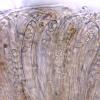

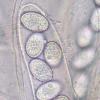
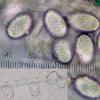
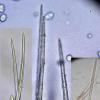
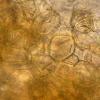
 CzechMycol
CzechMycol